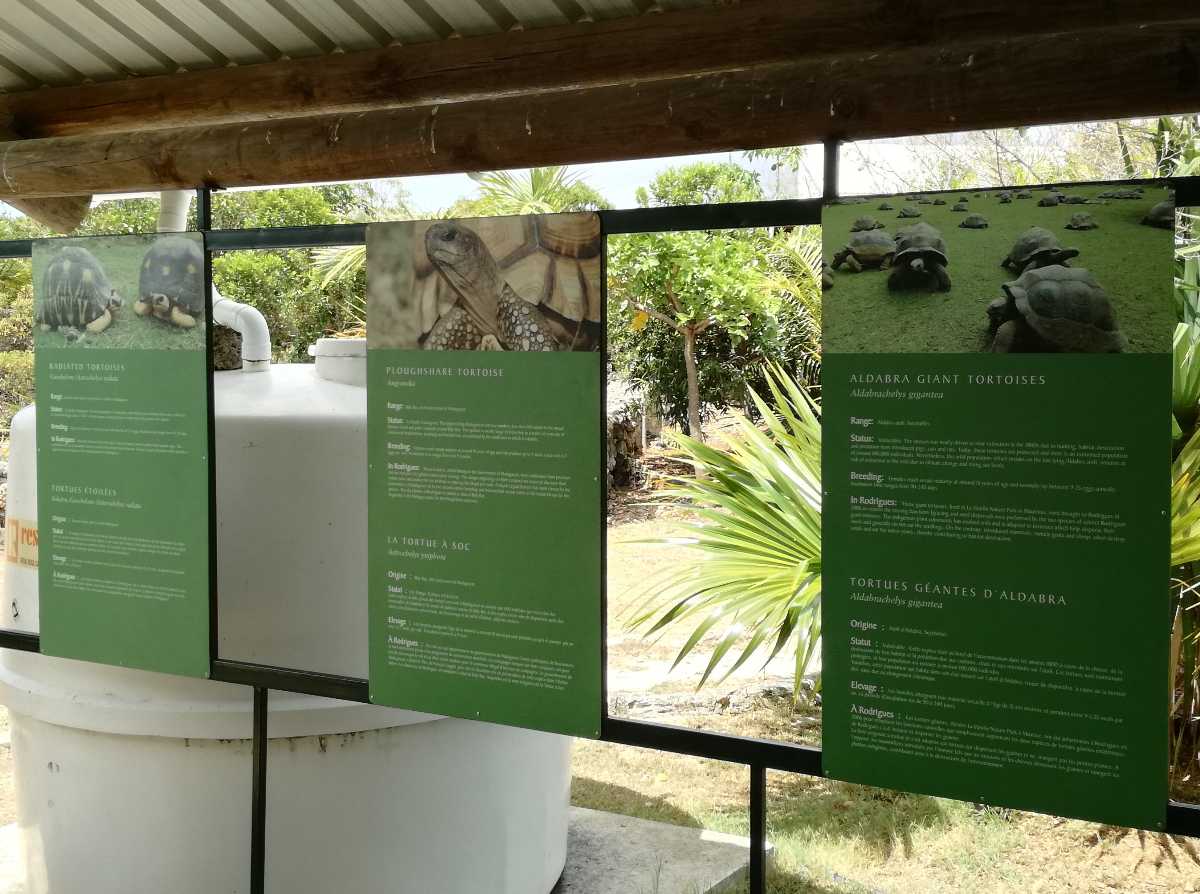Francois Leguat Nature Reserve
Tags : Forest
Timings : 9:00 AM - 5:00 PM
Tours: 9:30 AM, 10:30 AM, 12:30 PM and 2:30 PM
Time Required : 4-5 hours
Entry Fee : Adults: INR 320
Children: INR 160
Ways to Experience this attraction
Francois Leguat Nature Reserve, Mauritius Overview
While the mainstay of Mauritius is its stellar stretches of white sand beaches and crystal-clear azure lagoons, Mauritius is an exotic island and is home to a plethora of such exotic places that draw as many tourists as its tropical beaches do. Unbeknownst to many, Mauritius is not a lone island in itself but is surrounded by many smaller islets that serve as perfect weekend getaways when you're on a trip to Mauritius. One such island is Rodrigues, which is home to the Francois Leguat Nature Reserve, a very popular nature reserve in the country where you can experience the beauty of Mauritius in all its untouched, untainted glory, far away from the hustle and bustle of the rest of the country's tropical tourist destinations.
The François Leguat Reserve was opened in July 2007, and it has been becoming increasingly popular since then, both among the tourists and the local population. The mission behind this reserve was to recreate the original ecosystem of Rodrigues, and it was led by two environmentalists, Owen Griffiths and his wife, Mary-Ann Stanley.
Named after French explorer Francois Legault, the park houses over 2000 giant turtles, as well as thousands of other species of endemic plants. The implementation work in the François Leguat Reserve began in 2005 with the initial step of restoring the landscape of Rodrigues, which is over 300 years old and has been there since the colonisation and its disastrous consequences on the natural environment of the island.

Read More on Francois Leguat Nature Reserve
Things to Do
The Reserve
The François Leguat Reserve was opened in July 2007, and it has been becoming increasingly popular since then, both among the tourists and the local population. The mission behind this reserve was to recreate the original ecosystem of Rodrigues, and it was led by two environmentalists, Owen Griffiths and his wife, Mary-Ann Stanley. Named after French explorer Francois Legault, the park houses over 2000 giant turtles, as well as thousands of other species of endemic plants. The implementation work in the François Leguat Reserve began in 2005 with the initial step of restoring the landscape of Rodrigues, which is over 300 years old and has been there since the colonisation and its disastrous consequences on the natural environment of the island.The stepping-stone towards the recreation of the original ecosystem involved the eradication of the foreign plant species those were introduced to the island, especially the plant pests. They were replaced by planting the indigenous and endemic plants species those were accustomed to the lowland savannah of the François Leguat Reserve. Once the plants adapted to the surroundings, it was only then possible to reintroduce the animal species that once lived in this very habitat.
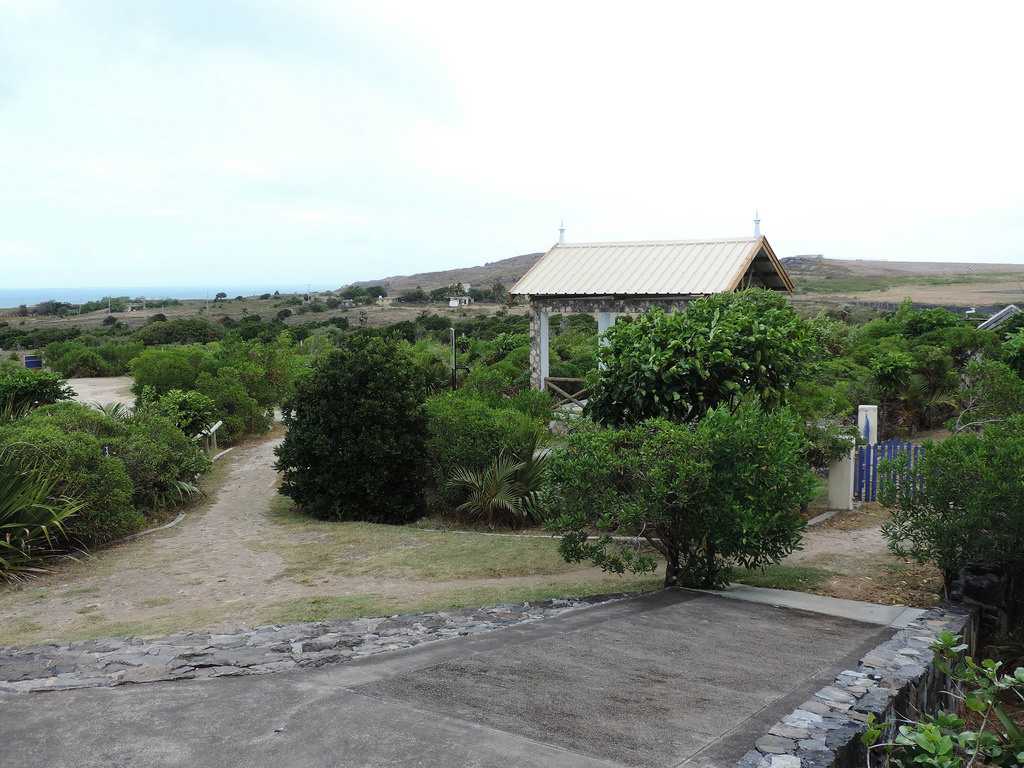
Since the large population of giant tortoises that once lived in Rodrigues are extinct, two new species native to the climate and environment of Indian Ocean had been introduced in reserve.
Nearly 555 turtles of both the species had been introduced into the reserve between 2006 and 2007. Today, 1200 individual tortoises live in reserve. It has been evolving and growing since then and has become a model of sustainable development for the other islands.
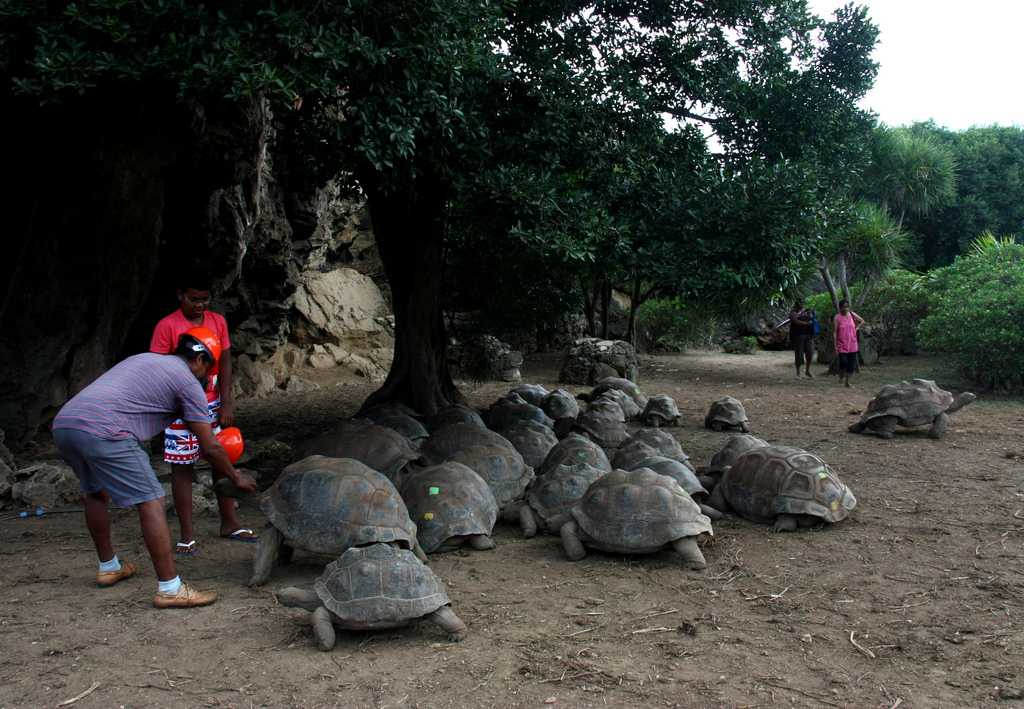
Source
The restoration of the indigenous forest species plays a vital role in the natural conservation of Rodrigues. Plants are essential in the environment as they conserve natural water resources and prevent soil erosion. The plants also serve as food and shelter for the native bat and bird species. The number of birds and bats are growing because of the restoration of the forest. The reintroduction of the giant tortoises is filling the void in the food chain, consolidating the island's native e
Tortoise in the Reserve
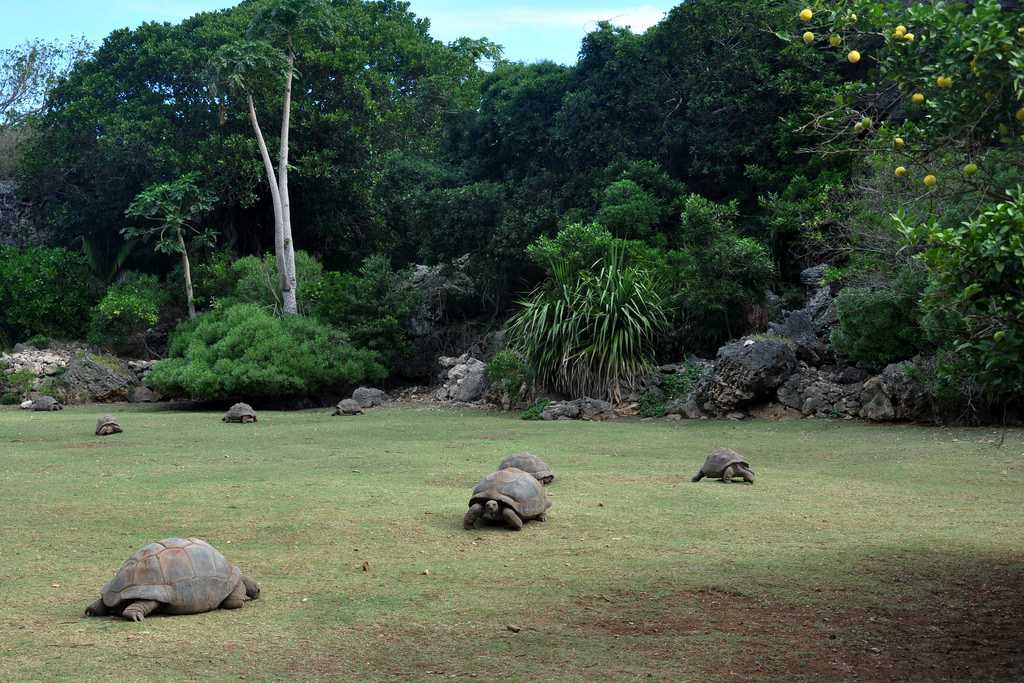
Source
Five endemic species of giant turtles once existed on the Mascarene Islands including the two in Rodrigues. Turtles had populated the islands abundantly and reportedly, 300,000 individuals lived during the 17th century. Sadly, all these individuals disappeared shortly after the end of the 17th century saw the advent of men on the islands and the last ones among the lot. Massive exploitation, hunting, predation of eggs and introduction of other alien animal species led to this unfortunate loss.
The two turtle species that can be found in the François Leguat Reserve were introduced as analogues to replace the two extinct species that once roamed on the land of Rodrigues. They have become an essential part of the ecology by playing the role of grazers, grass-eaters and seed providers of native plants.
65 Star turtles and 490 Aldabra turtles were transported to Rodrigues during 2006 and 2007 from the Vanille Reserve des Mascareignes in Mauritius, where a breeding program has been managed for more than 20 years now. Today, there are more than 650 Star turtles and 600 Aldabra turtles, and all the young turtles are naturally born in reserve itself.
The François Leguat Reserve has a goal of having more than 1000 adult turtles of each species that can roam freely within the fully restored native forest.
Here is a little information about the two types of turtles that can found in reserve:
Aldabra Giant Tortoise
It was the last survivor among the giant turtle species that once used to inhabit the islands of the Indian Ocean. It is also one of the most abundant turtle species in the world and has unique abilities of grazing low ground vegetation and drink from shallow puddles.The giant turtles that you can find in Mauritius today came from Aldabra under the supervision of a group of highly skilled scientists, including the great Charles Darwin as well. The scientists feared that the Aldabra species would suffer the similar fate as the rest of the species. Charles Darwin was the first person to recommend and ensure the conversation of this species by establishing the breeding facilities for endangered species. After analysing the written intervention by Darwin's group, the government of Mauritius and Seychelles accepted their proposal, and it was then when the turtles were introduced in the Pamplemousses Botanical Garden for the first time.
The Aldabra Giant tortoises are endemic to Aldabra Atoll, which is listed as a World Natural Heritage by UNESCO in the Seychelles Archipelago. Human influence is strictly prohibited in the protected grounds of Atoll, that natural habitat that inhibits about 85000 turtles.
Star Turtle
It is considered the most beautiful land turtle in the world because of its gorgeous looking carapace decorated with bright yellow streaks that radiates from the centre of each scale and creates a distinctive pattern, serving the purpose of camouflage in its natural habitat.A large number of Star turtles were transported to Reunion Island and Mauritius during the French colonisation in Madagascar until the 1930s. They were mainly used as a food source but a significant number of them were raised as pets, and it continues today as well.
The population of this species is declining in Madagascar due to massive destruction of their habitat, hunting them for food and overexploitation for illegal trade.
The Star turtle is endemic to the southwest coast of Madagascar.
Caves in the Reserve
There is a network of labyrinths of 11 known caves below the surface of the François Leguat Reserve. The longest and most spacious cave among them is the Great Cavern that is 500 metres long and is discreetly arranged to accommodate visitors. Following the route of the Great Cavern will introduce you to its secrets through the various formations of stalactites and stalagmites. The professionally trained guides of the reserve ensure your safety during the tour of the caves. Upon request, you can also get a tour of the Cave of the Virgin.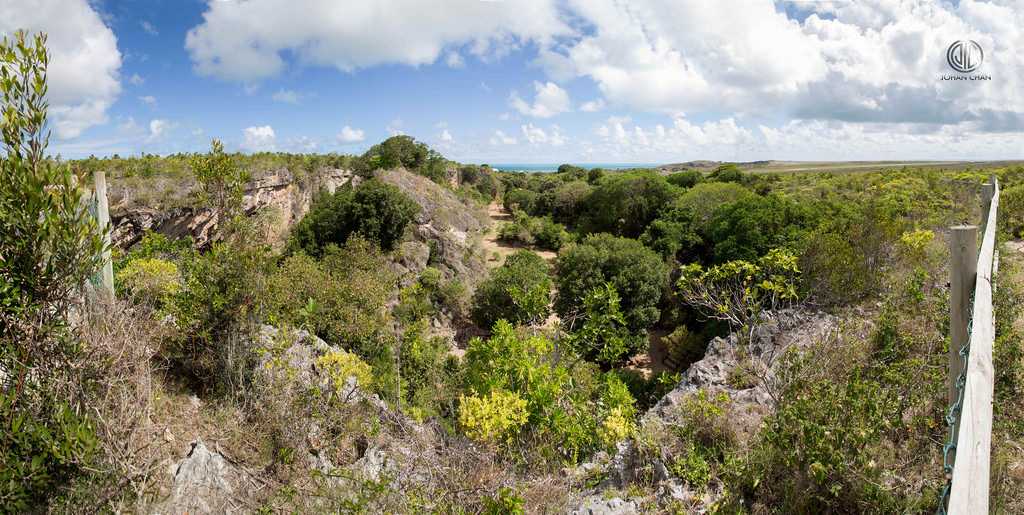
Source
Other than being an exciting and attractive place to visit, these caves are also used for scientific subjects. They have revealed historical clues about Rodrigues and its endemic flora and fauna. The caves are the significant source of fossils that are found in Rodrigues today. A considerable number of extinct animal bones have been retrieved from the caves that have helped the scientists to know more about those species. The bones are displayed in the museum for the visitors to look at.
In spite of its volcanic origins, Rodrigues is the only island to house a vast limestone plateau that is known as the Plaine Corail. Over time, the limestone started eroding due to rains forming underground rivers, resulting in caves. The Canyon Tiyel cave in reserve is an excellent example of this phenomenon.
Indigenous Forest of the Reserve
The vegetation found in reserve is the savannah lowland type. Before the implementation of the conservation project, the entire area was covered with plant pests such as acacias and lantana. It was mandatory to remove and control them before the introduction of the native, and endemic species could begin.The credit for the project goes to the Mauritian Wildlife Foundation who provided the François Leguat Reserve with all the available knowledge about seed production of endemic and native species and its seasoned planting technique. In the present day, there are more than 186,000 seedlings of 40 species of 25 endemic plants in reserve.
You can walk through this restored forest, which is slowly evolving, and enjoy its beauty and authenticity.
Bats in the Reserve
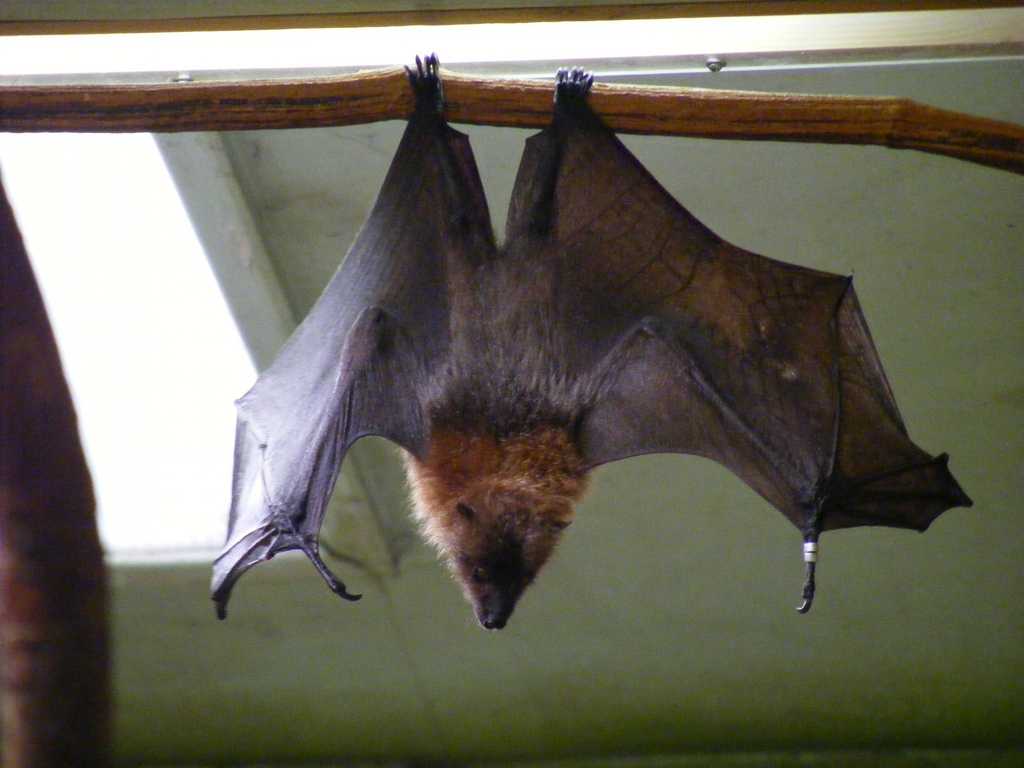
Source
Bats are the only mammals endemic to the Mascarenes and the only surviving species in the island is the Rodrigues Flycatcher often known as the Golden Dogfish. It plays a significant role in seed dispersal and pollination of fruit trees. You get a chance to be face to face with the rare dogfish in the large and impressive paddock of the reserve. These fruit bats have been taken care of temporarily at the reserve on behalf of the local authorities. They have become a distinct part of the conservation program as well.
Museum
Visit the museum in the François Leguat Reserve and go through the three different galleries to learn more about the fascinating story of Rodrigues, right from its discovery to the present day. An exhibition of the natural history of the island is systematically arranged, highlighting the endemic flora and fauna, and some extinct species. You will also come across the limestone geology of Rodrigues that explains the formation of the caves and their impressive structure.Lectures about the nature-sized sculpture of the extinct species Tortoise as well as the carapaces of different species of turtles from different parts of the world are conducted in the museum. The lectures also include topics like the bones of extinct species such as the iconic Solitaire bird of Rodrigues, which can be found in the caves of the reserve. High detailed paintings demonstrate the scenes of Rodrigues? natural life, displaying the abundance of indigenous flora and fauna.
Adopt a Turtle
Being an integrated conservation project, the reserve has initiated a program that allows you to adopt a turtle, either by visiting the reserve in person or online. Allowing adoptions is a way to expand the conservation work of endangered species with continued care. Post-adoption of a turtle, you will receive a photo of your turtle and certification along with the regular information related to the adopted animal. Further information can be obtained upon request. All adoptions are valid for a year and can be renewed annually. You can adopt either a Star turtle or an Aldabra turtle.Restaurant
After you are done with the tour of the reserve, why not take some time to sit on the terrace of the restaurant and enjoy the spectacular views overlooking the turquoise blue lagoons? You get to taste some of the best Rodrigues delicacies and quench your thirst with a variety of hot and cold drinks. There is a special menu meant for children as well. The visitors are advised to place their orders before they leave to visit the reserve.The restaurant is open to the public from 11.00 AM to 4.00 PM.
Shopping
You can find a whole range of quality gifts and souvenirs, crafts and books in the shop. The François Leguat Reserve supports and encourages the local artisans by providing them with a platform to display their products where visitors and customers can buy.Additional Information
_20180921150244.jpg)
Source
Business hours:
Monday to Sunday (including public holidays) - 9.00 AM to 17.00 AMAll the tours are guided, and a minimum of three tours are carried out in a day. The tour timings are:
9.30 AM, 10.30 AM, 1.30 PM and 2.30 PM
The complete tour of the François Leguat Reserve and the caves takes 2 hours. Some additional time is allotted for the visit to the museum, the restaurant, the shop and some leisure time to let you soak in the unique environment of this mythical reserve.
Prices:
For residents:· Adult - INR 350
· Children (3-12 years) - INR 175
For non-residents:
· Adult - INR 470
· Children (3-12 years) - INR 235
A special rate of INR 60 is given for local students visiting the Turtle Reserve.
To encourage the residents of Rodrigues to come and visit the reserve, a promotional rate is given every second weekend of the month.
· Adult - INR 80
· Children - INR 45
